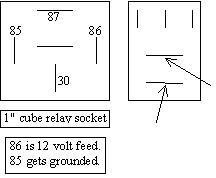Thank you your last sentence is exactly what I needed to know. Have you read the diagnostic fault codes recently? Any codes were erased previously when the battery was disconnected to replace the starter and alternator? Also, have you checked for spark? There are three common causes for a crank/no-start. Those are loss of spark, loss of fuel pressure, and by far the most common, loss of both of them. Too many people get hung up on the first thing they find missing and spend all their time in the wrong system. For some reason, that usually seems to lead them to the fuel pump.
The problem is the fuel pump will run for one second when you turn on the ignition switch. That gets the fuel pressure up to normal and causes people to mistakenly think the system is working all the time. Instead, what is important is if the pump resumes running during engine cranking. That is what is typically overlooked.
If you find you have no spark, we will start by assuming you also do not have fuel. This covers about ninety five percent of these no-starts. If there are still no fault codes, do not panic. The circuits in question often do not set codes just from cranking the engine. They set while a stalled engine is coasting to a stop. The first thing we need to determine is if the automatic shutdown, (ASD) relay is turning on.
Look for the wire that is the same color at every injector, and at any ignition coil. Usually that is a dark green/orange wire. Probe that wire through the back of the connector at any injector or coil, or on either of the smaller terminals on the back of the alternator. A test light works best for this because digital voltmeters do not respond fast enough. The test light should light up for one second when you turn on the ignition switch. You might also hear the hum of the fuel pump at the same time. That proves the ASD relay turned on and the engine computer has control of it.
What is important is the relay should turn on again during engine cranking. If it does not, the crankshaft position sensor and the camshaft position sensor are suspect. If there is no fault code to point to one of those circuits, you will need a scanner to view live data. That will list each sensor with a "no" or "present", or some similar indication to tell if the signals are showing up at the computer.
If the twelve volts did not show up for that first one second when you turned on the ignition switch, suspect a blown fuse. Remove the ASD relay, then in the socket, check for twelve volts on terminals thirty and eighty seven. One of those must have twelve volts all the time. I cannot remember which one that is, but if neither has voltage, a fuse is blown.
Image (Click to make bigger)
Sunday, January 5th, 2020 AT 7:50 PM




